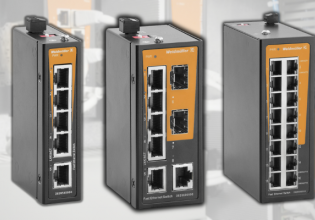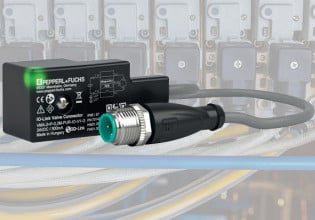RTI Announces Update of Software Framework for Commercial Autonomous Systems
Real-Time Innovations (RTI) has recently announced an upgrade of its software framework RTI Connext.
The 6.1 version of the framework was developed to address the development and deployment challenges associated with building remotely-operated autonomous systems.
-1.jpg)
RTI Connext 6.1 software. Image used courtesy of RTI
The update introduces several new features, particularly aimed to enable easy real-time remote operations in inaccessible, remote, or hazardous environments.
About Real-Time Innovations (RTI)
Founded in 1991, RTI focuses on creating software framework tools for autonomous systems. The company reportedly counts over 1,700 designs, and its software runs over 250 autonomous vehicle programs and controls the largest power plants in North America.
RTI software also coordinates combat management on U.S. Navy ships, powers a new generation of medical robotics, works on flying cars, and provides continuous monitoring intelligence capabilities for hospital and emergency medicine.
Headquartered in California with regional offices in Colorado, Spain, and Singapore, RTI is a compliant vendor with the Object Management Group (OMG) Data Distribution Service (DDS) standard.
Supporting Remotely-operated Autonomous Systems
The Connext 6.1 release supports the principle that autonomous systems like underwater drones, remotely accessible medical devices, space systems, and construction and mining robots, for example, often need manual control. However, due to the challenging conditions that these systems operate in, high reliability and real-time performance are hard to achieve in remote control applications.

RTI’s software was developed as a data-centric framework for performance, scalability, autonomy, and reliability. Image used courtesy of RTI
Built on RTI’s 30-year software development experience, Connext 6.1 tries to solve these issues by introducing numerous features aimed at maintaining stable connectivity despite tough environmental conditions. For instance, if a given network connection changes as the system moves, connectivity is kept stable without the need for reconnecting.
Consequently, the network is also kept secure—as there is no need for renegotiation between the systems—and reliable, thus preceding the loss of information.
RTI Connext 6.1: Features
From a technical standpoint, Connext 6.1 supports and optimizes fast communications across both highly variable local (LAN) and wide-area networks (WAN).
Customers can expect the WAN Transport feature to help achieve peer-to-peer user datagram protocol (UDP) WAN communication. This will be true for customers already using RTI Connext DDS, other middleware, or starting from scratch.
RTI was able to create a proof of concept allowing the company to remotely control and monitor a robot over the Internet in three hours.
In addition, the solution does not require software changes to support diverse network types, as its application programming interfaces (API) abstracts the underlying networks, allowing developers to target any environment. Connext 6.1 brings integration with .NET Core 5 to let developers use C# and improve ease of application development and increase portability across Windows, Linux, macOS, and the Unity game engine, bringing rich data sets to rich graphics environments.
The solution also offers a new System Designer tool to easily specify the configuration and interfaces in a Connext-based system, and a revisited Administration Console to allow manufacturers and systems integrators to better observe behavior during test and deployment operations.






